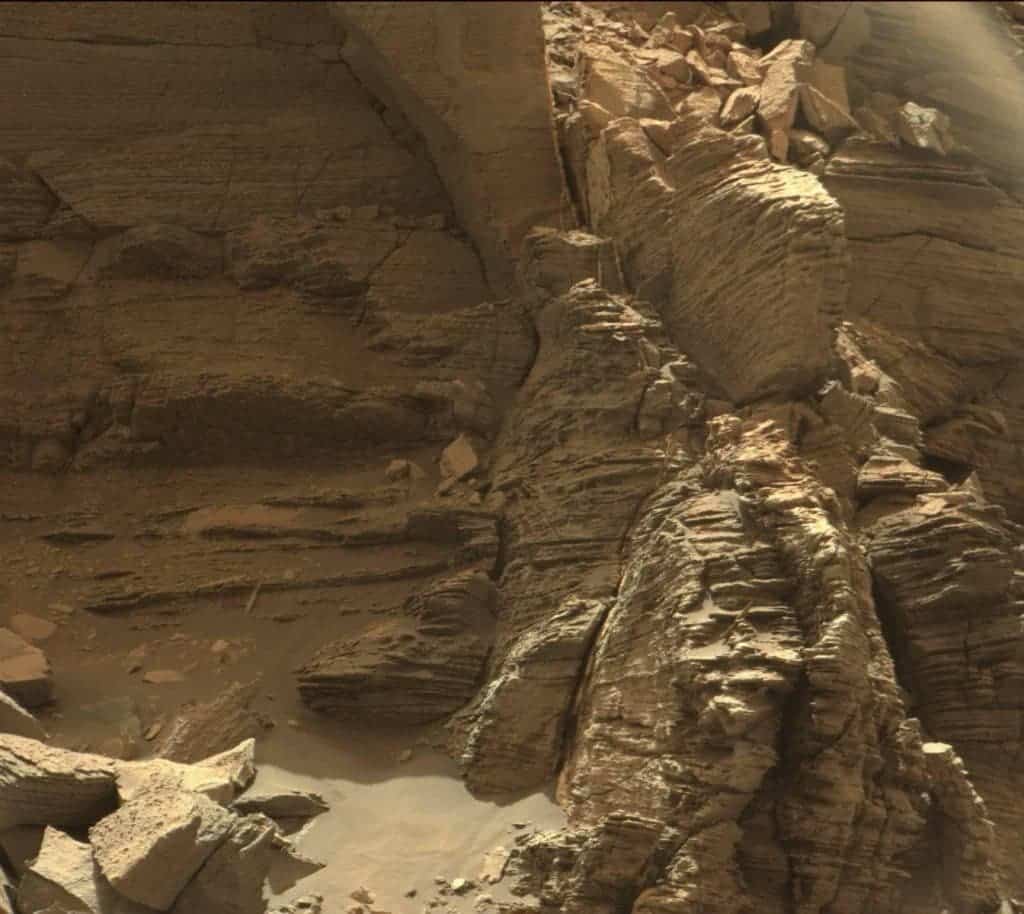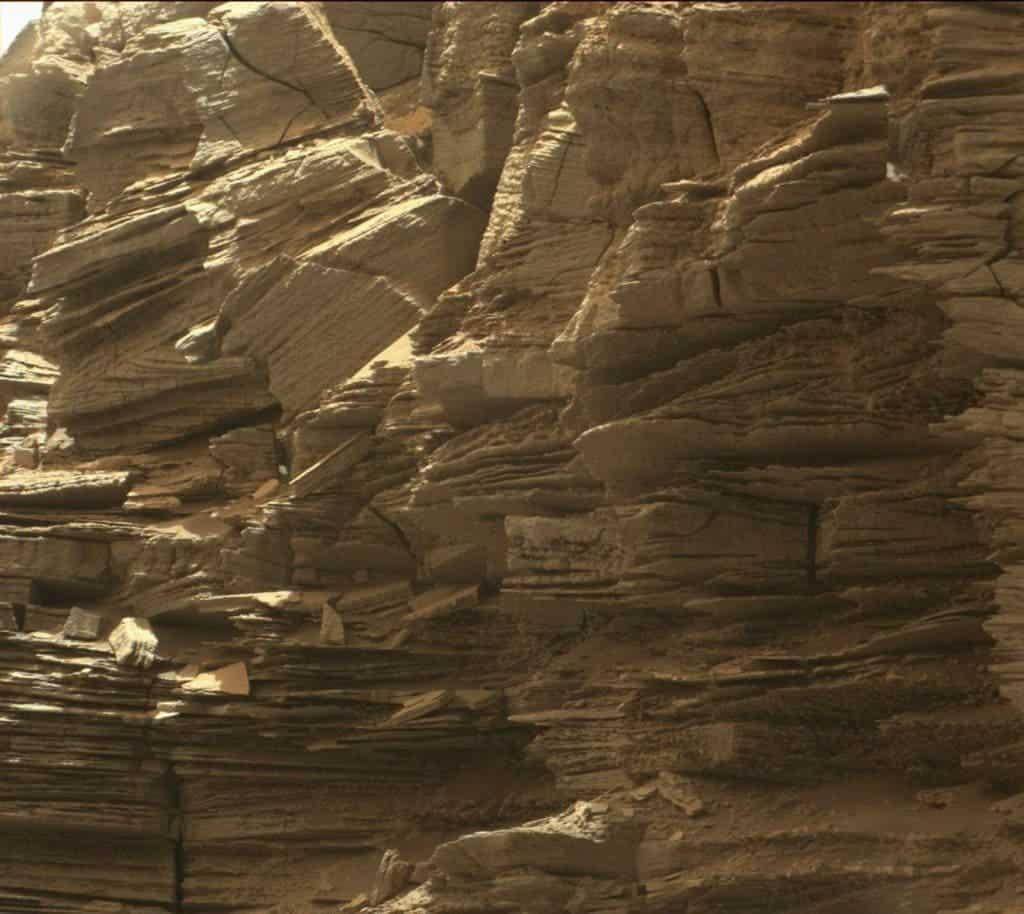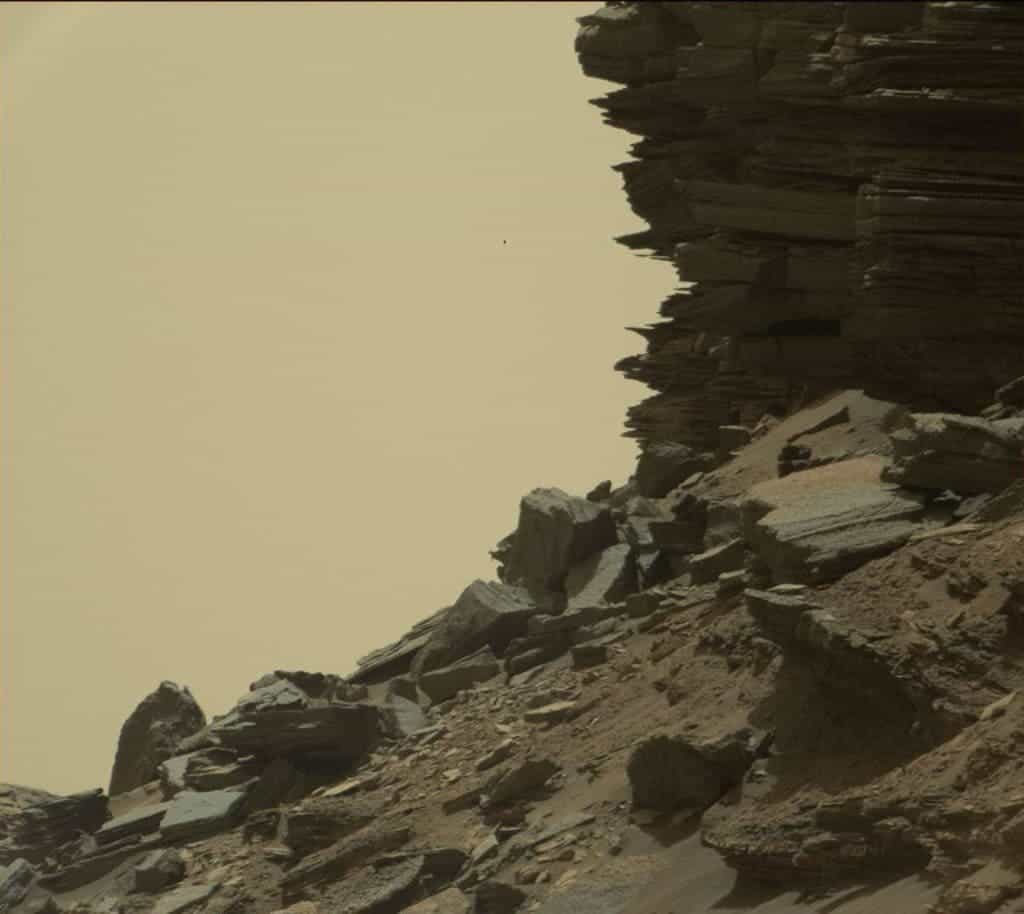Mars’ rock formations are oddly familiar, and their similarity to what we see on Earth has gotten scientists pretty excited.

Image credits NASA/JPL-Caltech.
NASA’s Curiosity rover has been busy poking around the lower slopes of Mount Sharp on Mars and has sent back some of the most striking color images of the Red Planet to date.
“Curiosity’s science team has been thrilled to go on this road trip through a bit of the American desert Southwest on Mars,” reports Ashwin Vasavada, a scientists working on the Curiosity project.
The pictures were taken on September 8th on the Murray Buttes area on the lower slopes of Mount Sharp — a towering peak rising 5.5 km (18,000 ft) in the center of Mars’ huge Gale crater. It was first identified in the 1970s and has all the makings of a heavily eroded sedimentary formation. While this is a pretty common occurrence here on Earth where there is a lot of wind and water to carry minerals from one place to another, it’s a surprising find on Mars. Researchers estimate that the peak took around 2 billion years to form, but have no idea where the sediments came from or what medium helped deposit them.
Murray Buttes is a relatively elevated area, littered with buttes (isolated hills with steep or vertical slopes and flat tops) and mesas. They’re pretty similar, with the only difference between them being size — buttes are like tiny flat-topped hills, and mesas are medium-sized flat-topped hills.

Image credits NASA / JPL-Caltech.
They were formed over millions of years by erosion working the crater’s sandstone floor. The new pictures Curiosity sent back gives us the best view we’ve ever seen of their shapes and the layers of rock from which they formed, a treasure trove of information for the team back home
“Studying these buttes up close has given us a better understanding of ancient sand dunes that formed and were buried, chemically changed by groundwater, exhumed and eroded to form the landscape that we see today,” says Vasavada.
The rover will conclude its month-long exploration of the Murray Buttes with a drilling campaign in the region’s southernmost buttes. After that, it will move higher up the slopes of Mount Sharp.


NASA said that they will piece the images together to assemble several large, color mosaics of the area in the near future — after they’re done learning all they can from these awesome snaps.


